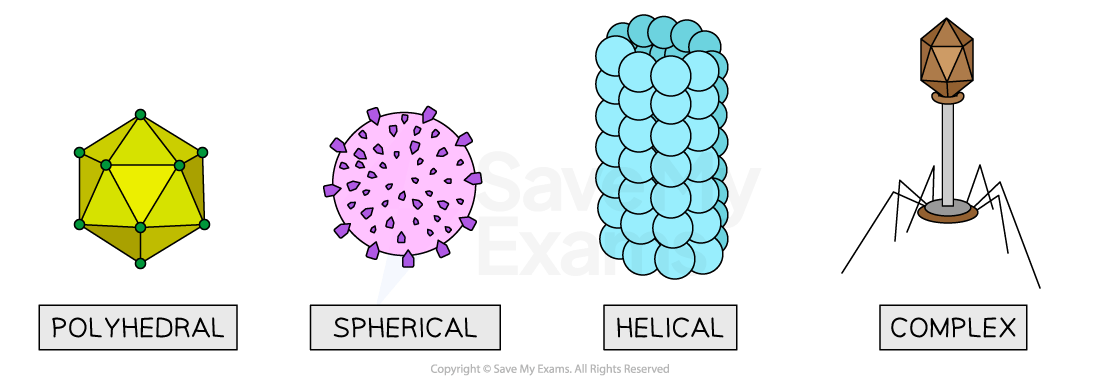Viruses (Cambridge (CIE) A Level Biology): Revision Note
Exam code: 9700
Viruses
Viruses are microorganisms that can only be seen using an electron microscope
They have no cellular structure (and so are acellular) and no metabolism
Viruses hijack the DNA replication machinery in host cells
The energy viruses need for replication is provided by respiration in the host cell
Viruses possess none of the characteristic features used for classifying organisms so they sit outside of the three-domain classification system
There is a wide-ranging debate as to whether viruses should be classified as ‘living’ or ‘non-living’ based on their inability to carry out the defining features of life outside of a host cell
Classifying viruses by their genetic material
Viruses are classified according to the type of nucleic acid (RNA or DNA) their genome is made from, and whether it is single-stranded or double-stranded
In cellular organisms like animals and plants, DNA is always double-stranded and RNA is usually always single-stranded
However, in viruses, DNA and RNA can be either single-stranded or double-stranded
As a result, there are four groups of viruses that exist:
DNA single-stranded viruses
DNA double-stranded viruses
RNA single-stranded viruses (this is the type of genome of SARS-CoV-2, the virus responsible for the COVID-19 pandemic)
RNA double-stranded viruses


Nucleic acid | Single or double stranded | Virus | Host Organism | Disease |
|---|---|---|---|---|
DNA | Single | Canine parvovirus type 2 | Dog | Canine parvovirus |
DNA | Double | Varicella zoster virus (VZV) | Human | Chickenpox & shingles |
RNA | Single | Morbillivirus | Human | Measles |
RNA | Double | Human immunodeficiency virus | Human | AIDS |

Unlock more, it's free!
Did this page help you?